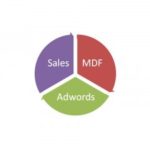Why are you using AdWords? What are your advertising goals? Chances are, you want to generate a higher return on investment (ROI) through generating more clicks, more traffic, and a higher conversion rate.
Your objectives and campaigns can be successful if, and only if, you can effectively segment markets and target them. This text is intended to teach you how to properly perform these functions and optimize the search engine or SEO.
Segmenting and Targeting the Customers in AdWords
Let’s assume that you are already well informed about accounts and campaigns structure, which help to demonstrate how to classify the markets and products of your site. From there, we can move on to targeting customers.
You can target your potential customers based on several subjects and apply those to different ad groups. Here are the themes:
1. Keyword
Keyword targeting is very easy to understand. It’s your target keywords that determine whether any certain ad will be shown to any specific customer. Your ads will show up within a search only if the visitor searches for your targeted keywords.
2. Location
You are allowed to focus on certain geographical areas, and should do so if you know that your product or service is popular in a specific area or region. So you should, realistically, compare various regions according to their performance, and determine the areas that are generating more profit, exclude the regions that are not performing well, and finalize a list of focus points.
Once you have the performance reports in hand, design the ad texts that you want to show up in search results. You can customize different landing pages for different locations, to optimize your return on interest. It is essential to assign weights to every location based on their performance and use these weights to determine budget amounts for each targeted location.
3. Placement
This AdWords targeting strategy allows you to show your ads only on your defined sites. It is important to select sites that are similar or relevant to your business, and monitor your selected sites, as the contents of websites constantly changes, and you may find your ads are appearing on some irrelevant sites.
4. Topic
Under this strategy, you just need to enter the topics you think are relevant to your ads. For example, if you think your ad for books is related to the keyword “library”, you simply mention the word ‘library’ in Google Display Network. This is typically more effective than the placement targeting approach; if a website changes its content so that it is no longer relevant to your site, your ads will be moved to a different site that has content related to your specific topic.
5. Keyword and Topic
This combined approach of targeting potential customers focuses mainly on target keywords. While using this approach, your ad will first appear on sites that are related to your target keywords and later, the search engine will look for matches in related topics as well.
6. Placement and Topic
This is another combined way to target customers, by first connecting the visitor to the sites defined by the visitor themselves, and then from there the search engine will connect the visitor to other pages that are highly relevant to the target topics that you specified.
Which path you choose typically depends on what best suits your budget structure. Combining placement and topic targeting will allow you to get the most relevant traffic and clicks overall, which leads to more loyal customers and thus a better Quality Score.





